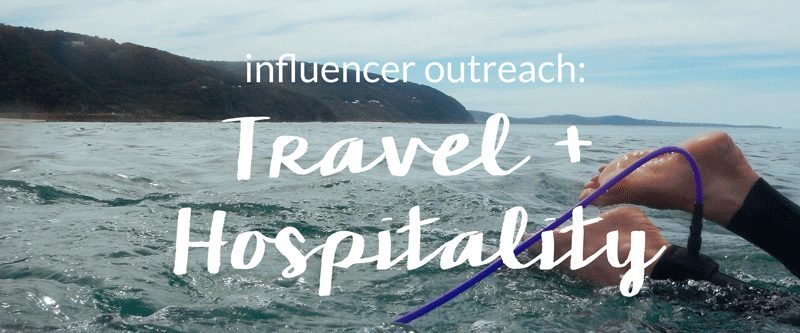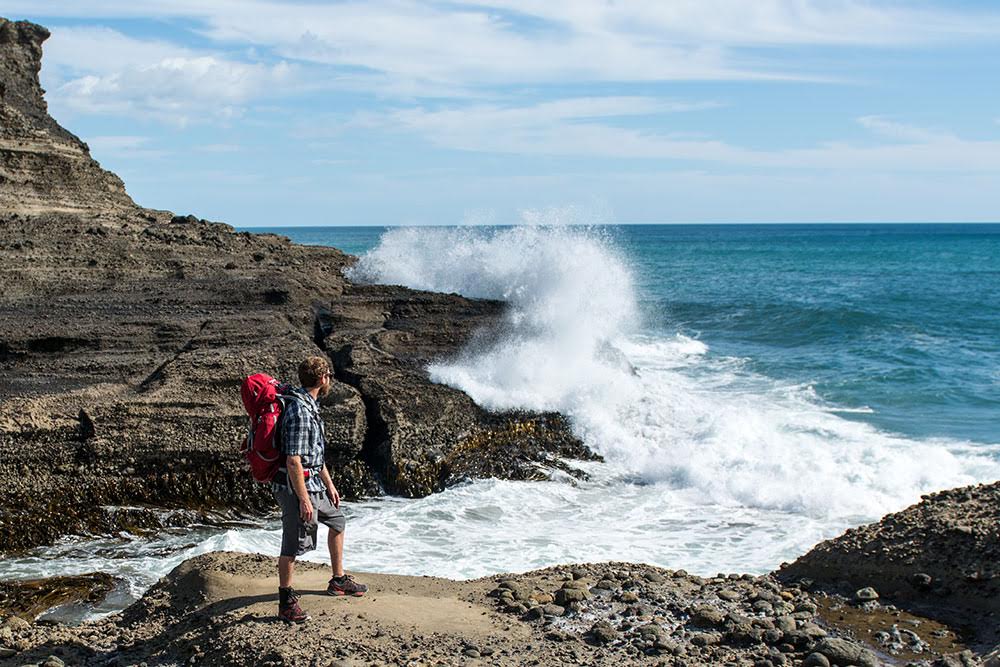Doing it Right: Influencer Outreach for Travel Brands

On paper, an influencer outreach program for a travel brand is easy money: spend a fraction of what it costs to produce and air a TV spot, gain access to a desirable target market and have your message presented in the rosy glow of a trusted opinion maker.
With half the consumer population reading blogs, and 81% of U.S. online consumers trusting advice and information from blogs, influencer marketing is absolutely a great play for travel brands. But how do you find influencers that align with your brand values? And did you know that you actually have to no-follow the link from the blog to your brand to avoid a search engine penalty?
There’s a few critical things to consider before kicking off an influencer outreach campaign:
Platforms vs. Sweat
Influencer outreach? There’s an app for that. Well, at least really slick automated platforms. Check out Fohr Card and TapInfluence for two ends of the spectrum on pricing and features.
Platform Advantages
- The ability to quickly search by industry, blogger location and audience metrics (but not audience demographics).
- The ability to pay bloggers through the platform without any tax hassles. Don’t undervalue this: keeping up with W9’s, payments and contracts with 40 independent bloggers could really piss off Rhonda in accounting. And you don’t want to piss of Rhonda.
- Some platforms have fairly robust analytics detailing, which posts gain the most traction. You can then take those posts and ask other influencers to share them (for a fee). Analytics tally social shares, comments and additional links, giving some hard numbers for cost per impression and other ROI indicators.
Platform Downsides:
- Brands either need to work with an agency partner that has an existing platform contract or commit to a hefty annual fee for platform access ($15,000 to $140,000 for managed access in my research).
- No one I’ve talked to yet has actual audience demographic targeting (You out there? Speak up!). Say Trudy is a Wisconsin mom who blogs about screen-free activities for kids and has 20,000 Twitter followers. One can assume the majority of those followers are other middle-aged mothers, but are they clustered in the Midwest or throughout the country? If the Wisconsin Dells engages her for a piece but it turns out the majority of her audience lives in the South, they just wasted a whole lot of time and cheese.
The other option is doing outreach manually. If you have a specific brand, you can find influencers a whole lot cheaper by Googling “Top Travel Bloggers”. The work comes in reading their material across all channels to ensure they’re the right brand fit, and then reaching out with a pitch to see if they would like to work with you. It is not a fast process, but the good news is you don’t need 100 different posts to see an impact. It’s a quality over quantity game, where three or four great connections can give your brand amazing exposure with target markets.
SEO Value
Don’t mistake influencer outreach for link building. If you paid a blogger/Instagram Star/Drifter with a Dedicated Periscope Following to post about your brand, you need to ensure two things. First, that they disclose they were paid or their stay was free, and then that any link to your brand from their post has a “nofollow” tag. Otherwise search engines can penalize your site for paying for links.
There are absolutely other benefits for this exposure besides the back link, including other organic links that happen naturally with quality content, social shares and brand equity within both target and new audiences.
But understand that if your boss asks, “So you spent $30,000 on an influencer outreach platform, and $12,000 paying bloggers…but they didn’t link to our website?,” you will have to answer yes, and then probably make yourself scarce for a hot minute.
How to Do it Right
Once you get to the actual outreach portion of the project, think about crafting pitches that do more than show product or a hotel room. Think about ways the influencer can integrate your brand into a meaningful experience. Don’t just offer a free hotel room, but also arrange for hotel staff to take the guest to one or two of their favorite local haunts around the hotel. Personal connections and meaningful experiences make for better copy and better ROI.
Also understand most travel bloggers have an itinerary they’re following based on established goals, themes or relationships. Make sure your product or property aligns with their journey to avoid wasting time in outreach. For example, Lloyd of Backpacking Scuba Diver writes about amazing dive sites across the world. Would he be a great fit for a swim fin brand? Absolutely. Is he going to fly to a central African safari on his own dime for a free room? Absolutely not.
Check out this example from Zeal Optics when they partnered with professional photographer Jeff Nass:
 “Zeal Optics and I partnered up to cover my travels around New Zealand for the year of 2015. The partnership would share my photography and adventures and present the company from a lifestyle perspective. Not every image had to be specifically showcasing their product but more of the lifestyle the company embraced. Zeal Optics featured my photography through blog posts and Instagram. The images and text were created to market to clients with the same adventurous, exploring lifestyle. Our partnership tied perfectly with their company hashtag #exploremore,” said Nass.
“Zeal Optics and I partnered up to cover my travels around New Zealand for the year of 2015. The partnership would share my photography and adventures and present the company from a lifestyle perspective. Not every image had to be specifically showcasing their product but more of the lifestyle the company embraced. Zeal Optics featured my photography through blog posts and Instagram. The images and text were created to market to clients with the same adventurous, exploring lifestyle. Our partnership tied perfectly with their company hashtag #exploremore,” said Nass.
Yep. That’s how you do it. Interested in talking about influencer platforms, travel industry marketing trends or where to get the best Mongolian noodles in Anhui, China? Hit me up @LuciaJoanne.
Stay In Touch.
Subscribe to our monthly email newsletter.
